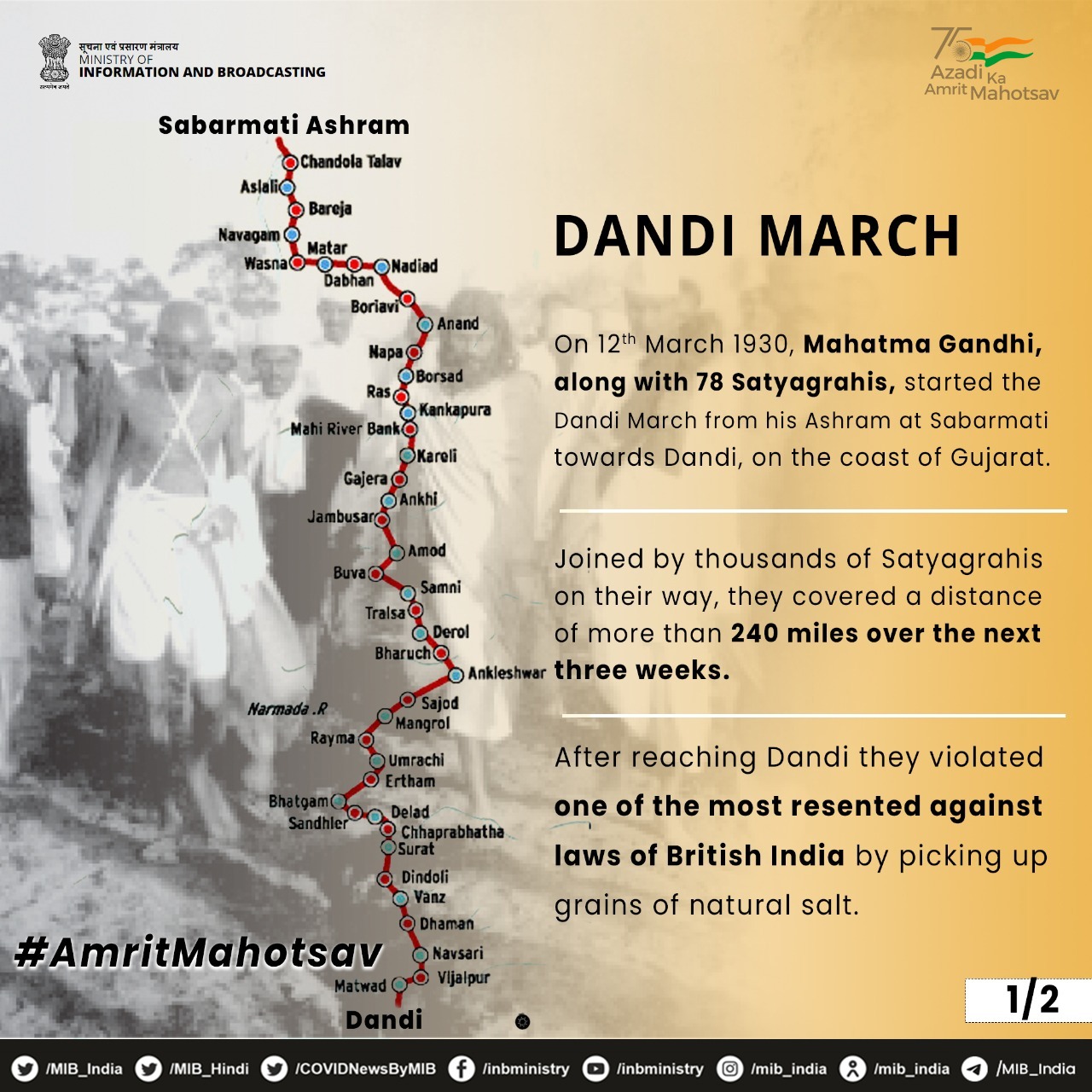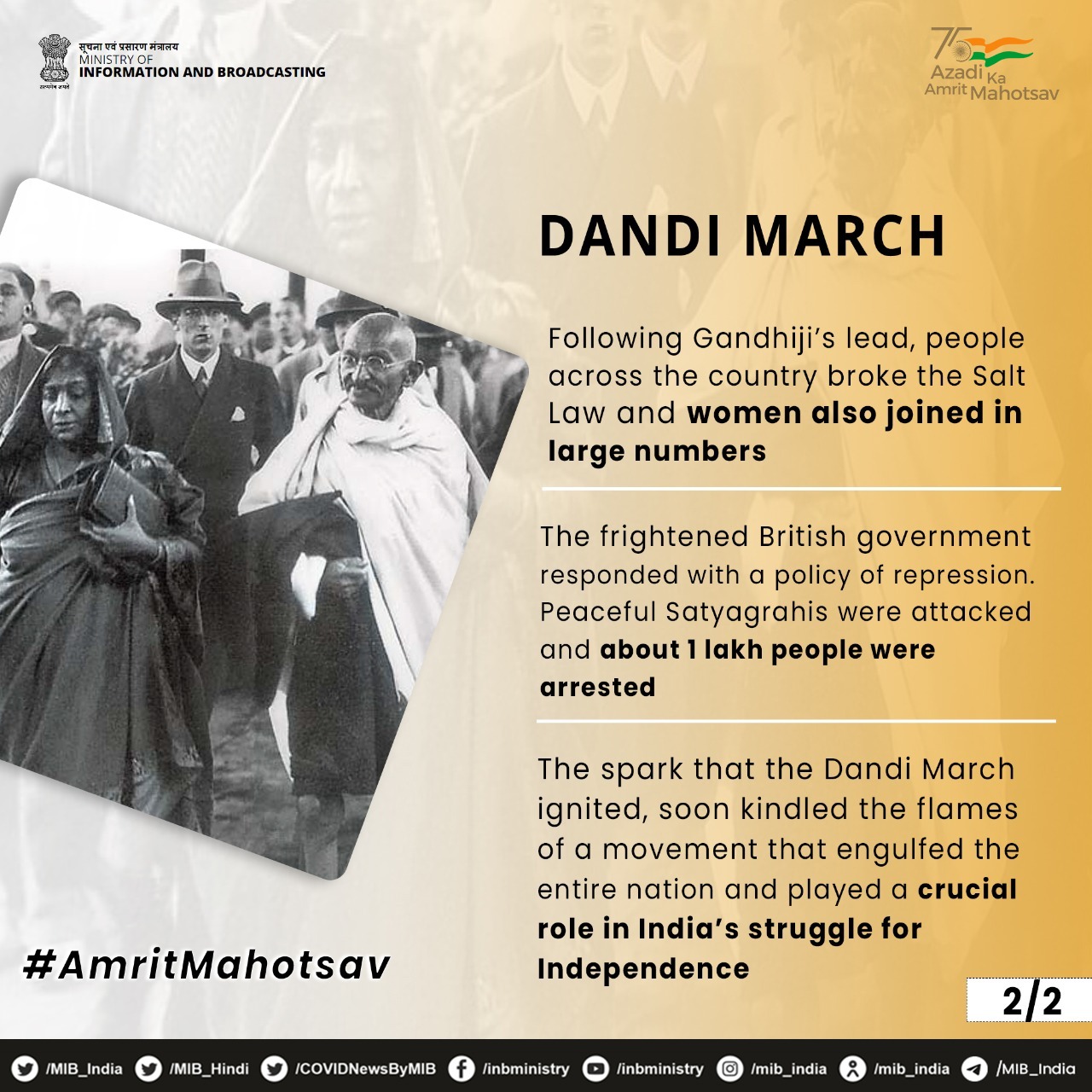தண்டியில், உப்பு சட்டத்தை மீறுதல்
(06 ஏப்ரல் 1930)
1930-ம் ஆண்டு ஏப்ரல் 6-ம் தேதி மகாத்மா காந்தியின் புகழ்பெற்ற தண்டி யாத்திரை முடிவுக்கு வந்தது.
1930-ம் ஆண்டு மார்ச் 12-ம் தேதி மகாத்மா காந்தியால் தொடங்கப்பட்ட உப்பு உற்பத்தியில் ஆங்கிலேய எதேச்சியதிகாரத்திற்கு எதிரான அகிம்சைப் போராட்டமே இந்தப் பேரணியாகும்.
குஜராத் மாநிலம் அகமதாபாத்தில் உள்ள சபர்மதி ஆசிரமத்தில் இருந்து கடலோரப் பகுதியில் உள்ள தண்டி கிராமத்திற்கு வரலாற்று சிறப்புமிக்க தண்டி யாத்திரைக்கு அவர் தலைமை தாங்கினார், அங்கு அவர் உப்பு சட்டத்திற்கு எதிர்ப்பு தெரிவித்து அச்சட்டத்தை உடைத்தார்.
தண்டியை அடைய அவருக்கு 24 நாட்கள் ஆனது. இந்த யாத்திரை காந்திஜியின் சபர்மதி ஆசிரமத்திலிருந்து தண்டி வரை 4 மாவட்டங்கள் மற்றும் 48 கிராமங்கள் வழியாக சென்றது. 78 தன்னார்வலர்களுடன் இயக்கத்தைத் தொடங்கிய காந்திஜி, பின்னர் ஆயிரக்கணக்கானவர்கள் அவரது வழியில் இணைந்தனர்.
உப்புச் சட்டங்களுக்கு எதிரான சிவில் ஒத்துழையாமை இயக்கத்தில் இந்த இயக்கம் குறிப்பிடத்தக்க பங்கைக் கொண்டிருந்தது.
Believing in the idea of Swaraj, #MahatmaGandhi, began over 240 miles long march from Sabarmati Ashram to Dandi on 12th March, 1930 and broke the Salt Law on 6th April, 1930. The #DandiMarch played a crucial role in India’s freedom struggle.
▶️ On this day in 1930, Mahatma Gandhi’s famous Dandi March ended.
⏩ Gandhi ji led the historical Dandi March from Sabarmati Ashram in Gujarat to the village of Dandi, where he broke the salt law as a protest.
Breaking Salt Law at Dandi 6 April 1930 On 6 April 1930 Mahatma Gandhi’s famous Dandi March ended.
The March was a non-violent protest against the British monopoly on salt production that was initiated by Mahatma Gandhi on 12 March 1930.
He led the historical Dandi March from Sabarmati Ashram in Gujarat’s Ahmedabad to the village of Dandi in the state’s coastal area, where he broke the salt law as a protest. It took him 24 days to reach Dandi.
It passed through 4 districts and 48 villages from Gandhi Ji’s Sabarmati Ashram to Dandi. Gandhi Ji started the movement with 78 volunteers and was later joined by thousands of others on his way.
The movement played a significant role in the Civil Disobedience Movement against the salt laws.


